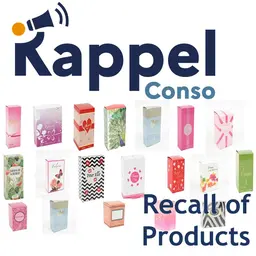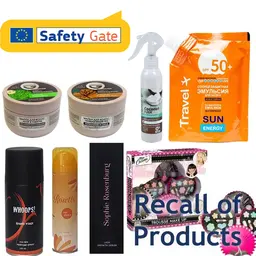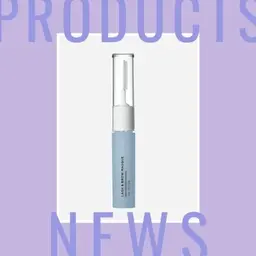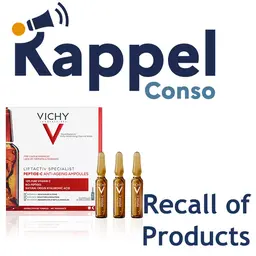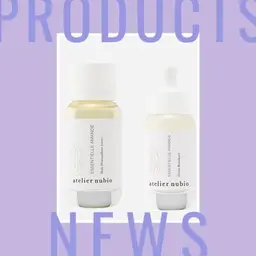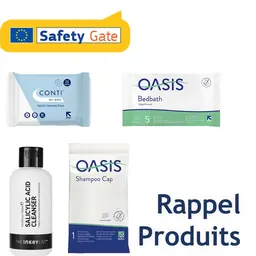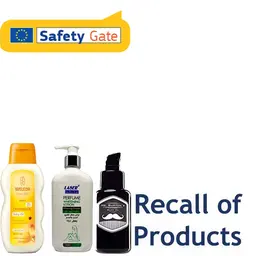
No, it is not an image beauty is keen on, but real flower petals that beautify our face care products at first sight! Similar to small paintings, they enchant us every day. With their homemade and somewhat vintage appearance, they are devilishly feminine, and as delicious to smell as they are sublime to look at. But it is not just that. Their presence in cosmetic lotions, serums, oils, and masks, is also useful for the skin.
Flower petals were first used in lotions.
 The pioneer was Kiehl’s, with the Calendula Herbal Extract-Toner (250ml, €37.50), a toner formulated with whole calendula flowers launched in the 1960s! There is something soothing about these marigold petals floating in the liquid… And that is fortunate, because it is exactly the function of this gentle, alcohol-free lotion for problem, even sensitive skins. If
‘it quickly became a flagship product,’
according to the brand, they still waited over half a century to come back this spring with a new SOS moisturizing mask featuring petals and a calendula extract, as well as aloe vera, for all skin types, even the most sensitive: Calendula & Aloe Soothing Hydration Mask (28ml, €18 or 100ml, €45).
The pioneer was Kiehl’s, with the Calendula Herbal Extract-Toner (250ml, €37.50), a toner formulated with whole calendula flowers launched in the 1960s! There is something soothing about these marigold petals floating in the liquid… And that is fortunate, because it is exactly the function of this gentle, alcohol-free lotion for problem, even sensitive skins. If
‘it quickly became a flagship product,’
according to the brand, they still waited over half a century to come back this spring with a new SOS moisturizing mask featuring petals and a calendula extract, as well as aloe vera, for all skin types, even the most sensitive: Calendula & Aloe Soothing Hydration Mask (28ml, €18 or 100ml, €45).
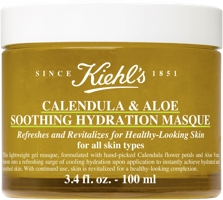 It is true it is not simple to make these skincare products. As a matter of fact, the calendula petals have been harvested and selected by hand following a responsible approach since 1960. The plants are cultivated without any pesticides, and the whole flowers are harvested by hand every year in August. To keep the petals intact, they are sorted out by hand, and then dried in the open air, without any additional treatment or artificial heat. When they arrive at the Kiehl’s plant, they are slowly added to the transparent gel base composed of aloe vera. Once mixed, the petals provide the formula with a golden colour. All unused petals and flower parts are put back into the soil to fertilize it for future harvests.
It is true it is not simple to make these skincare products. As a matter of fact, the calendula petals have been harvested and selected by hand following a responsible approach since 1960. The plants are cultivated without any pesticides, and the whole flowers are harvested by hand every year in August. To keep the petals intact, they are sorted out by hand, and then dried in the open air, without any additional treatment or artificial heat. When they arrive at the Kiehl’s plant, they are slowly added to the transparent gel base composed of aloe vera. Once mixed, the petals provide the formula with a golden colour. All unused petals and flower parts are put back into the soil to fertilize it for future harvests.
A traditional production process that is… necessarily costly
The presence of petals in the texture (preferably a transparent texture, so petals are more visible) enhances the impression of skincare efficacy, ‘life’, and naturalness – with an extra poetic touch. Their production process remains exclusively manual (the flowers are harvested by hand to keep only the most beautiful, dried in the open air, and then the most attractive petals are selected and added to the formulas one by one), which explains why these skincare products are expensive – generally more than their equivalents devoid of petals. Naturally, it is recommended to also use transparent packaging (that is the case of lotions, oils, and serums), since opaque jars offer less visual impact.
Petals are not just pretty…
Furthermore, associating petals with plant extracts (rose, calendula, peony…) potentiates the latter’s properties. There are active molecules in petals (polysaccharides, saponins, flavonoids…), in addition to perfume. For example, with calendula, combining the extract and petals optimizes the soothing, anti-inflammatory virtues of the product. We can also say the petals’ physical presence reinforces the idea of the plant totum.
Beauty infusion
 Nothing represents beauty better than flower petals, and brands have understood that perfectly well this spring. There is a profusion of petals in Fresh products (Fresh is a small, but precious company which belongs to LVMH and is distributed in Sephora stores): they have just launched a Rose Deep Hydration Facial Toner (250ml, €47). On top of the rose oil and water, this skincare lotion contains real rose petals in suspension.
Nothing represents beauty better than flower petals, and brands have understood that perfectly well this spring. There is a profusion of petals in Fresh products (Fresh is a small, but precious company which belongs to LVMH and is distributed in Sephora stores): they have just launched a Rose Deep Hydration Facial Toner (250ml, €47). On top of the rose oil and water, this skincare lotion contains real rose petals in suspension.
Here is another sensorial experience: the L’Occitane Pivoine Sublime Petal Cleansing Oil (200ml, €29.50). It is the first time the Provençal brand has integrated whole petals to a face care product for a visibly dazzling result. Selected exclusively among the most beautiful flowers of the season, they are sorted out by hand at the height of their beauty during one specific week of May, when peonies produce their most wonderful flowers. Dried with a method that helps them keep their natural qualities, the petals are selected by hand, infused in golden oil, and sealed in transparent, globe-shaped bottles. Beyond its cleansing, makeup removing properties and non-comedogenic formula, this oil really transforms the daily routine!
 Korres, the Greek, very ‘natural’ cosmetics brand, has also imagined a Wild Rose Advanced Brightening & Nourishing Face Oil (30ml, €39), where real wild rose petals float in a quickly absorbed, silky micro-oil texture. Here, the wild rose oil extract combined with petals reduces pigmentation disorders, while nourishing the epidermis and improving the appearance of expression lines. The formula is 94.5% natural.
Korres, the Greek, very ‘natural’ cosmetics brand, has also imagined a Wild Rose Advanced Brightening & Nourishing Face Oil (30ml, €39), where real wild rose petals float in a quickly absorbed, silky micro-oil texture. Here, the wild rose oil extract combined with petals reduces pigmentation disorders, while nourishing the epidermis and improving the appearance of expression lines. The formula is 94.5% natural.
Radiance blossoming…
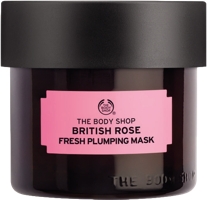 Is it because of British gardens? Let’s admit it, skincare products with petals have something very British about them. So, it is no surprise The Body Shop has developed one in the form of a moisturizing mask (British Rose Fresh Plumping Mask, 75ml, €20). 100% Vegan, it contains organic British rose essence and petals. Cultivated exclusively for The Body Shop in a farm rewarded for its environmental commitment, in the heart of the British countryside, again, the roses are harvested by hand, dried in the open air, and distilled on the spot with mountain fresh water. This mask plays with the idea of a ‘dewy glow’, also contains cynarrhodium oil, and uses Fair Trade-certified organic aloe as a natural wetting agent. It is actually surprising organic cosmetics brand have not taken interest in this trend yet, although it is true it increases the production cost. Flowers are not the only ones to be able to be incorporated to jars or bottles. Seeds, fruits, leaves… all these could also provide products with an extra touch of naturalness. Besides, it could inspire the perfume industry to make perfumes of a new genre – more ‘lively’ and traditional.
Is it because of British gardens? Let’s admit it, skincare products with petals have something very British about them. So, it is no surprise The Body Shop has developed one in the form of a moisturizing mask (British Rose Fresh Plumping Mask, 75ml, €20). 100% Vegan, it contains organic British rose essence and petals. Cultivated exclusively for The Body Shop in a farm rewarded for its environmental commitment, in the heart of the British countryside, again, the roses are harvested by hand, dried in the open air, and distilled on the spot with mountain fresh water. This mask plays with the idea of a ‘dewy glow’, also contains cynarrhodium oil, and uses Fair Trade-certified organic aloe as a natural wetting agent. It is actually surprising organic cosmetics brand have not taken interest in this trend yet, although it is true it increases the production cost. Flowers are not the only ones to be able to be incorporated to jars or bottles. Seeds, fruits, leaves… all these could also provide products with an extra touch of naturalness. Besides, it could inspire the perfume industry to make perfumes of a new genre – more ‘lively’ and traditional.
To be continued…
Ariane Le Febvre



